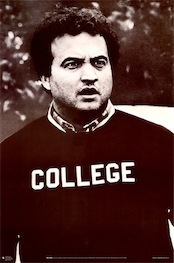Is Our College Students Learning

A groundbreaking study (in terms of its sample size and rigor) finds that a large minority of college students don't really learn much in college. I've seen this written up in the mass media in a few sensationalistic ways (I saw a CNN chyron about "Is College Worth It?") all of which seem to me to involve sweeping away the two key broad points here:
— The higher education establishment does scandalously little of its own accord to try to measure learning.
— The problems here are clearly concentrated in specific sub-groups of students and schools and don't say much of anything about "the value of college" in a general sense.
I recommend analyses from Kevin Carey and Richard Kahlenberg who both delve deeper into the details.
Per Carey:
After controlling for demographics, parental education, SAT scores, and myriad other factors, students who were assigned more books to read and more papers to write learned more. Students who spent more hours studying alone learned more. Students taught by approachable faculty who enforced high expectations learned more. [...] Students majoring in the humanities, social sciences, hard sciences, and math—again, controlling for their background—did relatively well. Students majoring in business, education, and social work did not. [...] The study found that students whose financial aid came primarily in the form of grants learned more than those who were paying mostly with loans. Debt burdens can be psychological and temporal as well as financial, with students substituting work for education in order to manage their future obligations. Learning was also negatively correlated with—surprise—time spent in fraternities and sororities.
Kahlenberg focuses on the fact that these factors, combined with peer effects, seem to indicate that the more selective colleges are in fact better at generating learning:
Controlling for a range of individual student characteristics, including academic preparation, the authors find that students at selective colleges make stronger gains on the CLA—which measures critical thinking, complex reasoning, and writing skills—than those at less selective institutions. Selective institutions are defined as those in which students at the 25th percentile have a combined math and verbal SAT score above 1150, and less selective are those in which students at the 25th percentile have a combined score below 950.
Unfortunately, however, the way most "selective" schools handle their admissions processes the overwhelming majority of the students who benefit from their educational services are the people with the least objective need. Elite schools that take their social mission seriously must act to diversify their student bodies. But of course the less-selective schools necessarily serve a larger group of people, so there's a need to reform their practices. They can't recreate the peer group effects of the selective schools, but they can be reformed so as to recreate the combination of high academic standards, engaged faculty, and lessened financial burden that are the characteristics of high student performance.


Matthew Yglesias's Blog
- Matthew Yglesias's profile
- 72 followers



